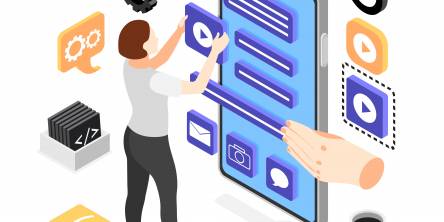How are CRMs changing in 2025?

Customer Relationship Management (CRM) platforms are undergoing a significant transformation in 2025. Once seen as simple tools for tracking leads and managing contacts, CRMs have now evolved into intelligent, cross-functional platforms that directly support business growth, operational efficiency, and long-term customer value. Read this blog to learn about ways it is changing the client servicing aspects of every business.
CRM Is No Longer a Departmental Tool
Earlier, CRM systems were owned almost entirely by sales teams. Today, they are managed and used across multiple functions because the customer journey touches every department.
In 2025, CRM platforms are designed to centralize everything that happens before, during, and after a customer engages with your brand. That includes:
- Coordinating campaigns across email, WhatsApp, web, and offline channels
- Managing support tickets, onboarding workflows, and escalations in one place
- Tracking contractual obligations such as renewals, service-level agreements, or approvals
- Consolidating interaction history across calls, chats, meetings, and emails
- Ensuring data consistency between departments like sales, support, finance, and operations
By functioning as a shared workspace, CRMs ensure that every internal stakeholder operates from the same customer view. It breaks silos and brings clarity to decision-making.
Artificial Intelligence Is Now Built-In
One of the most significant shifts in 2025 is the deep integration of AI within CRM systems. AI is now built into the platform itself, not added as an extension later.
Modern CRM platforms use AI to:
- Score and prioritise leads based on behaviour, buying intent, and previous touchpoints
- Auto-generate replies, follow-ups, and contextual summaries for meetings and support interactions
- Detect sentiment during live conversations to escalate urgent issues automatically
- Forecast pipeline movement using predictive analytics across geographies or product categories
- Deliver insights about what’s working in campaigns, follow-ups, or onboarding
This level of automation improves how teams respond, reduces time spent on manual updates, and increases output per employee. By 2025, 70% of CRM platforms have built-in AI, and businesses using AI-enabled CRMs are 83% more likely to exceed their sales goals.
AI in CRM is no longer a competitive advantage, it’s a baseline expectation.
Cloud and Mobile CRM Are the New Normal
The way CRM is accessed is just as important as what it does.
Businesses expect CRM platforms to be accessible anywhere, at any time. This shift supports mobile-first workflows, distributed teams, and faster response times. Field agents, remote employees, and managers can all work from the same platform—without limitations.
The result: better communication, faster action, and more visibility across the business.
Composable CRM Is Driving Flexibility
In 2025, how you access CRM is just as critical as what it does.
Cloud-first deployment is now the norm, allowing businesses to set up, scale, and integrate CRM platforms without being locked into expensive infrastructure or on-premise limitations.
What’s changed most is user behaviour. Teams now expect:
- Mobile access to CRM dashboards, reminders, and tasks
- Real-time updates across devices
- Offline access for field reps or on-site teams who can't rely on constant connectivity
- Responsive layouts that work across phones, tablets, and desktops
By the end of 2025, 75% of users are expected to access their CRM via mobile devices. This shift enables faster decisions, better responsiveness, and continuous operations, especially for businesses with distributed teams or active fieldwork.
To understand how this system can help your business to connect with your customers on a deeper level, let’s start by learning how crm works
Final Thoughts
CRM in 2025 is not just a tool, it’s an operational layer that connects teams, systems, and decisions around the customer journey.
It is:
- AI-powered
- Mobile-ready
- Modular and composable
- Measurably tied to business performance
As digital expectations continue to grow, businesses can’t afford to rely on outdated CRM setups. The competitive edge now lies in how adaptable, intelligent, and cross-functional your CRM ecosystem truly is.
The question is no longer whether you need a CRM, but whether yours is built for how your business works today.
Similar Articles
Discover how expert book printing solutions transform manuscripts into high-quality printed books. Learn about the process, materials, customization options, eco-friendly practices, and the future of modern book printing.
Architectural 3D rendering price guide covering costs, factors, AI impact, and typical pricing for residential and commercial exterior and interior renders.
Most large organisations already know how hard enterprise application testing can be. You’ve got old and new systems talking to each other, custom code layered on vendor platforms
When it comes to working at heights, safety and efficiency are paramount. Aerial work platforms (AWPs) have revolutionized how professionals approach elevated tasks across countless industries, from construction sites to warehouse operations.
The modern age of customers expect constant availability, no matter what the offer. And for that, the market requires rapid innovation cycles. In such a high stakes environment, technology infrastructure is more than just a cost center.
When evidence seals fail, cases weaken. Explore how compromised chain of custody can derail investigations and jeopardize justice.
Compare hydraulic and traction residential elevators to find the best fit for your home. Learn how each system works, their pros and cons, space needs, energy use, and maintenance requirements.
Extend the lifespan of your commercial marina docks with proactive maintenance. Learn essential inspection routines, material-specific care, and safety tips to protect your investment and ensure long-term dock performance.
Learn the key factors in designing an engineered fall protection system. Discover how hierarchy of controls, task analysis, structural integrity, and fall clearance ensure safety and compliance.









